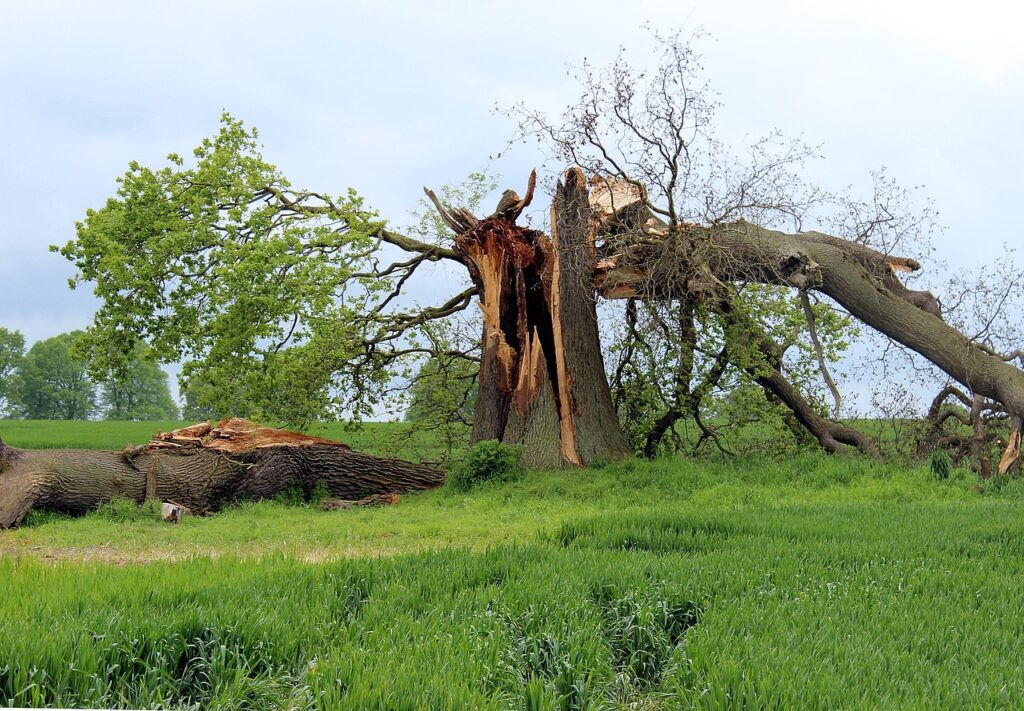In the realm of tree care, mulching stands out as a simple yet powerful practice that can profoundly impact the health and vitality of your trees. Whether you’re a seasoned gardener or a novice enthusiast, understanding the role of mulching and implementing best practices can make a significant difference in the well-being of your trees. In this article, we’ll delve into the benefits of mulching and provide essential guidelines for incorporating this practice into your tree care routine.
Understanding Mulching
Mulching involves applying a layer of organic or inorganic material around the base of trees and shrubs. This protective covering serves multiple purposes, ranging from moisture retention to weed suppression and soil enhancement. Mulch can be made from various materials, including shredded bark, wood chips, compost, straw, or even gravel. Each type of mulch offers unique benefits, but the overarching goal remains consistent: to create a conducive environment for tree growth and development.
Benefits of Mulching
Moisture Retention
One of the primary benefits of mulching is its ability to retain soil moisture. By forming a barrier between the soil and the air, mulch helps prevent rapid evaporation, ensuring that the roots remain adequately hydrated, especially during hot and dry periods. Consistent moisture levels are vital for healthy root development and overall tree vigor.
Weed Suppression
Mulch acts as a natural weed suppressant by inhibiting weed seed germination and growth. By smothering existing weeds and blocking sunlight from reaching the soil surface, mulch reduces competition for water, nutrients, and space, allowing trees to thrive without the encumbrance of invasive vegetation.
Soil Insulation
In addition to retaining moisture, mulch provides insulation for the soil, protecting it from extreme temperature fluctuations. During winter, mulch acts as a buffer against freezing temperatures, reducing the risk of root damage caused by frost heaving. In summer, it helps moderate soil temperature, preventing overheating and minimizing stress on tree roots.
Soil Improvement
Over time, organic mulches decompose and contribute valuable organic matter to the soil. This decomposition process enriches the soil structure, promotes microbial activity, and enhances nutrient availability, fostering a fertile environment for root growth and nutrient uptake. As the mulch breaks down, it also improves soil aeration and drainage, ensuring optimal conditions for root respiration.
Erosion Control
Mulch serves as a protective layer that helps prevent soil erosion caused by wind and water. By reducing the impact of raindrops and slowing down surface runoff, mulch helps stabilize the soil structure and prevents loss of topsoil. This is particularly beneficial on slopes and areas prone to erosion, where maintaining soil integrity is essential for tree stability and health.
Best Practices for Mulching
Proper Application
When applying mulch, ensure that it forms a uniform layer around the base of the tree, extending several inches beyond the drip line. Avoid piling mulch against the trunk, as this can create a favorable environment for pests and diseases and lead to stem rot. Instead, maintain a gap of a few inches between the mulch and the trunk to allow for air circulation.
Depth Consideration
Aim for a mulch depth of 2 to 4 inches, depending on the type of mulch and the specific needs of your trees. Avoid excessive mulch depths, as they can suffocate the roots and promote anaerobic conditions in the soil. Periodically check the mulch layer and replenish it as needed to maintain the desired thickness.
Mulch Selection
Choose high-quality mulch materials that are free from contaminants and weed seeds. Organic mulches, such as shredded bark or wood chips, are preferred for their ability to improve soil health and provide long-lasting benefits. Avoid using materials that may leach harmful chemicals or create imbalances in the soil pH.
Regular Maintenance
Keep an eye on your mulch throughout the year and perform routine maintenance as needed. Remove any debris or weeds that may accumulate on the surface, and fluff the mulch periodically to prevent compaction. Reapply mulch as it decomposes to maintain the desired depth and effectiveness.
Seasonal Considerations
Adjust your mulching practices based on seasonal changes and weather conditions. In spring, refresh the mulch layer to prepare for the growing season and suppress weeds. In fall, replenish mulch to provide insulation and protection during winter months. Avoid mulching too close to the onset of winter, as it may attract rodents seeking shelter.
Conclusion
In conclusion, mulching plays a crucial role in tree care by providing numerous benefits that promote growth, health, and resilience. By retaining moisture, suppressing weeds, improving soil quality, and offering protection against environmental stressors, mulch serves as a valuable ally in nurturing and maintaining healthy trees. By adhering to best practices for mulch selection, application, and maintenance, you can harness the full potential of this simple yet effective technique to enhance the beauty and longevity of your trees. So, next time you’re tending to your garden, remember the transformative power of mulch and give your trees the care they deserve.
